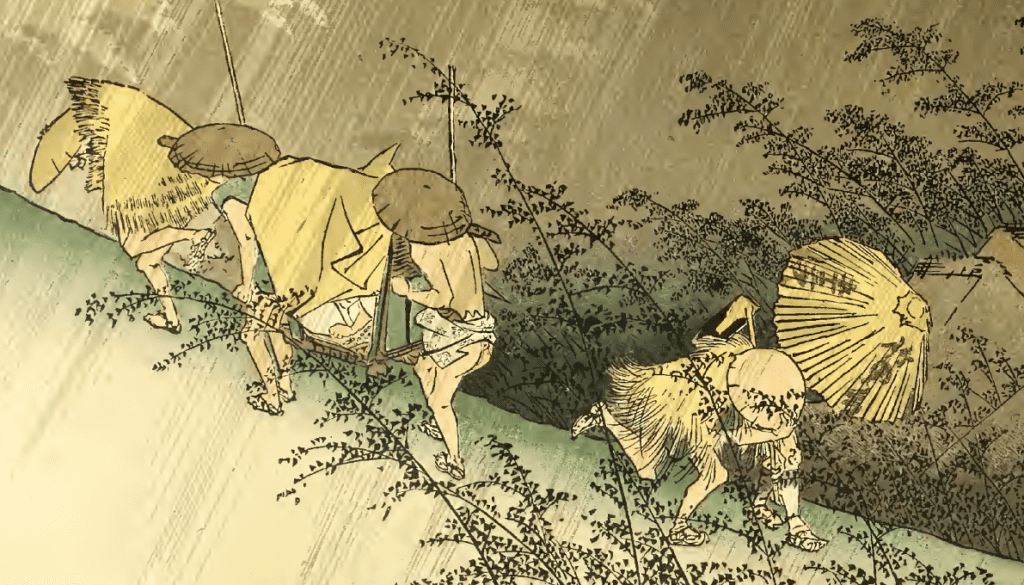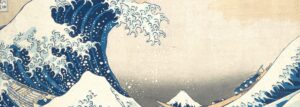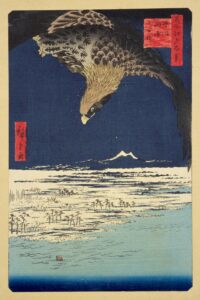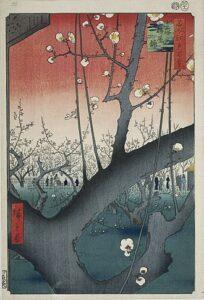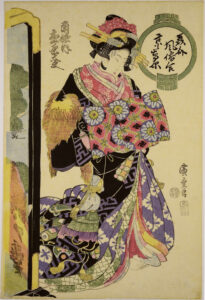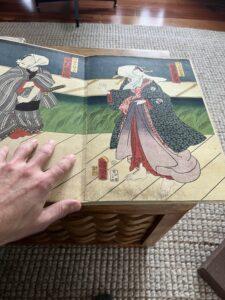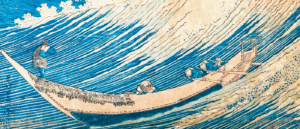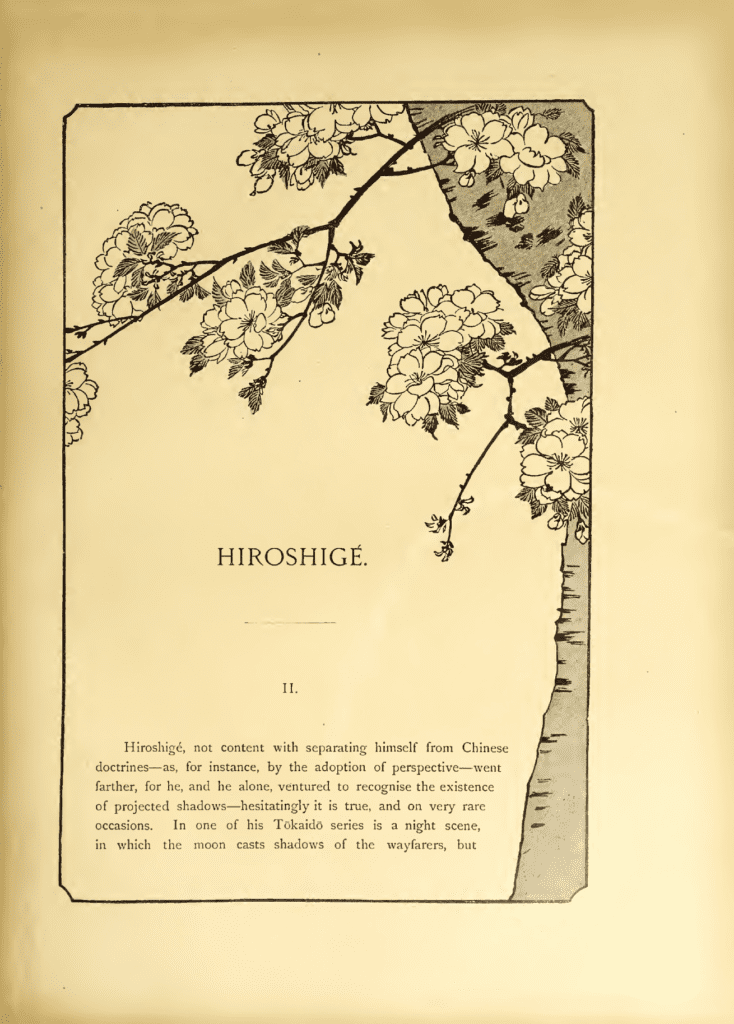 by WILLIAM ANDERSON
by WILLIAM ANDERSON
although the street is in perspective, the shadows are not, and the lanterns borne by some of the wayfarers are not allowed to share the privilege of the principal luminary.* The representation of reflections was also sternly tabooed by the older artists, unless the subject of the drawing made their introduction absolutely necessary. 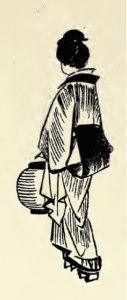 The moon, for example, might be mirrored (out of perspective) upon the surface of a lake, if the subject were a verse or anecdote that included any reference to the image, but the painter must not repeat in the same way a cloud, a tree, or any other object, whatever claim it might possess on the score of realism. Hiroshigé, however, has, in at least two of his broadsides, ventured to show a reflection of the trees fringing the river bank upon the smooth waters of the stream. But it is remarkable that, after having made such experiments once, he should have been content to try no more. For the Japanese art connoisseur he was already a Philistine ; hence he had nothing to lose by insisting upon a proper use of his eyes, yet the influence of the
The moon, for example, might be mirrored (out of perspective) upon the surface of a lake, if the subject were a verse or anecdote that included any reference to the image, but the painter must not repeat in the same way a cloud, a tree, or any other object, whatever claim it might possess on the score of realism. Hiroshigé, however, has, in at least two of his broadsides, ventured to show a reflection of the trees fringing the river bank upon the smooth waters of the stream. But it is remarkable that, after having made such experiments once, he should have been content to try no more. For the Japanese art connoisseur he was already a Philistine ; hence he had nothing to lose by insisting upon a proper use of his eyes, yet the influence of the 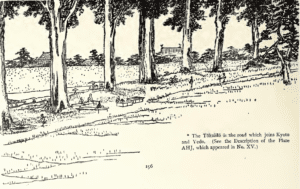 time-honoured artistic conventions was too strong for him, and he dared no more to break entirely through the web with which tradition had fettered the mind and hand of the painter, than to question the divine origin of the Emperor of Great Japan.
time-honoured artistic conventions was too strong for him, and he dared no more to break entirely through the web with which tradition had fettered the mind and hand of the painter, than to question the divine origin of the Emperor of Great Japan.
Despite the incompleteness of his education, and the imperfection of his glimpses of the truth, he was an original artist and one whose work will have a permanent value for his countrymen and for all who are interested in his country. In all his landscapes, even after they have passed through the hands of the engraver and printer, the spirit of the locality is preserved with remarkable felicity The appearances of rain, mist and wind, the frigidity of the snow-laden streets and fields, the sombre calm of night, were suggested so vividly that we care little to analyse the process by which the result was achieved. His brush, moreover, was not confined to pictures of scenery. He drew birds and flowers with a skill that would be remarkable for any but a Japanese artist, and his illustrations to legend and history are clever and spirited, although less forcible than those of some of his associates. He executed also a series of caricature broadsides, but probably to order, for they add nothing to his reputation, and are for the most part plagiarisms from Hokusai and others. Outside his landscapes, indeed, there was little in
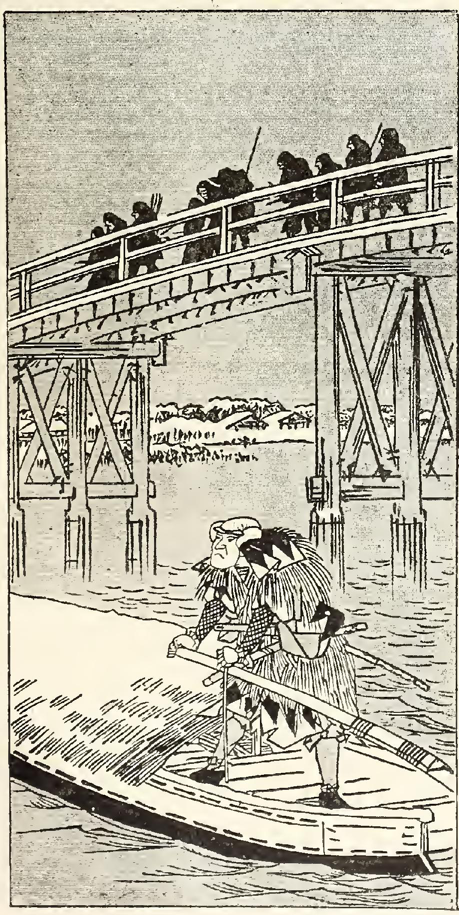 his work that would earn him high distinction in his school, but in his speciality he stands far above his fellows. It may be noted that he did not enter into rivalry with the Utagawas in theatrical portraiture, or in the illustration of novels, but he occasionally joined with Utagawa Kuniyoshi in supplying landscape backgrounds to figures drawn by the latter artist.
his work that would earn him high distinction in his school, but in his speciality he stands far above his fellows. It may be noted that he did not enter into rivalry with the Utagawas in theatrical portraiture, or in the illustration of novels, but he occasionally joined with Utagawa Kuniyoshi in supplying landscape backgrounds to figures drawn by the latter artist.
He is known in Europe almost entirely by the engravings after his designs, but it would be unfair to judge him by these alone. His original Sketches possess qualities of colour and manipulation that are too often either feebly trans- lated or sadly misrepresented in the woodcuts published under his name. He had, indeed, a wonderfully firm and expressive touch, his renderings of atmosphere and distance were bold and successful, and his colouring was often almost as tender and harmonious as that of the masters of the Kano school. Much of this is only hinted at in the chromoxylograph but his faculty for selecting the most effective point of view, his bold composition of foreground, and his happy grouping of accessories, gives a value to even the roughest reproductions.
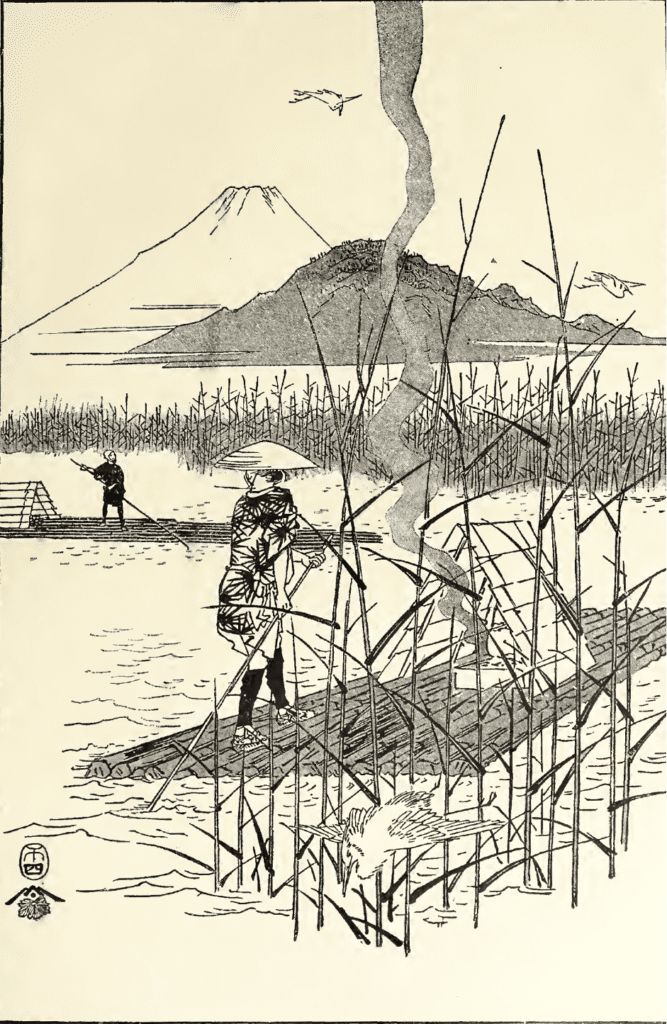
He was a man of exceptional talents, and although, with the advantages of a higher mental and artistic culture, he might have left compositions more worthily representative of his natural gifts, it is doubtful whether he would have achieved a life-work, at the same time so extensive in range, and so interesting to his contemporaries and to posterity.
It- may seem strange that in a sketch dealing mainly with the subject of engravings, no special reference has been made to the engravers. There are two reasons for this reticence. One is that the engraver in black and white could display little of his own individuality. 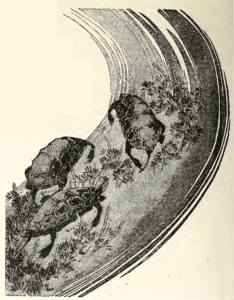 His function was merely to leave intact the sharply-defined lines of the artist ; he had nothing to interpret in tone or colour, and although his labour enables us to recognise the touch of the designer’s pencil, it leaves scarcely anything by which his own hand can be distinguished. His work is an admirable example of painstaking and skilful labour, but it is little more. Where gradations of tone or colour had to be expressed, all that was special to Japanese engravings belonged to the printer, and the perfect harmony of the colour prints of the latter part of the last and the early part of the present century, was unquestionably due to the direct supervision of the artist, who was allowed to combine pigments with which he was perfectly familiar. The second reason is, that the decadence of chromoxylography began during the most busy days of Hiroshigé. It was then that the printers seem to have commenced to use, in place of the old native and Chinese pigments, the most crude and glaring of the blues, yellows, reds, and greens, that the European importer could furnish. They were very cheap, and they advertised themselves from afar, but they destroyed art and demoralised at once the designers and the public.
His function was merely to leave intact the sharply-defined lines of the artist ; he had nothing to interpret in tone or colour, and although his labour enables us to recognise the touch of the designer’s pencil, it leaves scarcely anything by which his own hand can be distinguished. His work is an admirable example of painstaking and skilful labour, but it is little more. Where gradations of tone or colour had to be expressed, all that was special to Japanese engravings belonged to the printer, and the perfect harmony of the colour prints of the latter part of the last and the early part of the present century, was unquestionably due to the direct supervision of the artist, who was allowed to combine pigments with which he was perfectly familiar. The second reason is, that the decadence of chromoxylography began during the most busy days of Hiroshigé. It was then that the printers seem to have commenced to use, in place of the old native and Chinese pigments, the most crude and glaring of the blues, yellows, reds, and greens, that the European importer could furnish. They were very cheap, and they advertised themselves from afar, but they destroyed art and demoralised at once the designers and the public.
Some indeed of Hiroshigé’s designs were sufficiently well engraved, more particularly the early Tōkaidō series, from which the illustrative plate is selected, and from which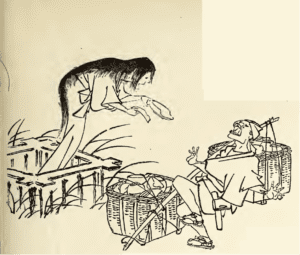 M. Gonse has chosen one of the most striking reproductions in L’ArtJaponais, but in most of the others the collector has to mourn the induced by European contact with an art in which Japan had enjoyed a century of pre – eminence over the rest of the world.
M. Gonse has chosen one of the most striking reproductions in L’ArtJaponais, but in most of the others the collector has to mourn the induced by European contact with an art in which Japan had enjoyed a century of pre – eminence over the rest of the world.
A list of the en- graved works of our artist would be too long for insertion here, but it may be sufficient to recommend the following as the most representative examples : —Tōkaidō go-jin-san éki: The fifty-three stations of the high road between Yédo and Kioto (Tōkaidō), oblong quarto, printed in columns, N.D. Yédohiak’-kei: A hundred views of Yédo, quarto* printed in colours, N.D. E-hon Yédomeisho: Pictorial description of Yédo, 12 vols., duodecimo, printed in black and pale blue, 1851-2. Tōkaidōfū-kei so-gwa: Views on the Tōkaidō. Uniform with the last, 1851.
Many engravings bearing the signature of Hiroshigé, and traces of his manner, have appeared since his death. These are probably from the hand of a pupil.
WILLIAM ANDERSON.
Note. — The Illustrations to this Article are from the works of Hiroshigé.
To see the first Article from this series on Hiroshige please click here

